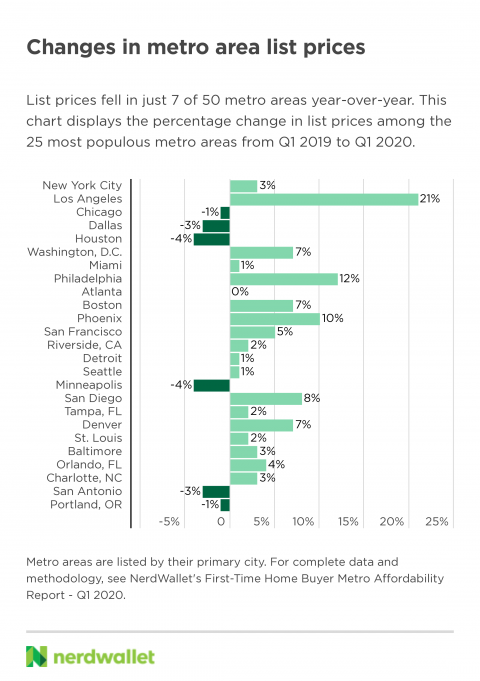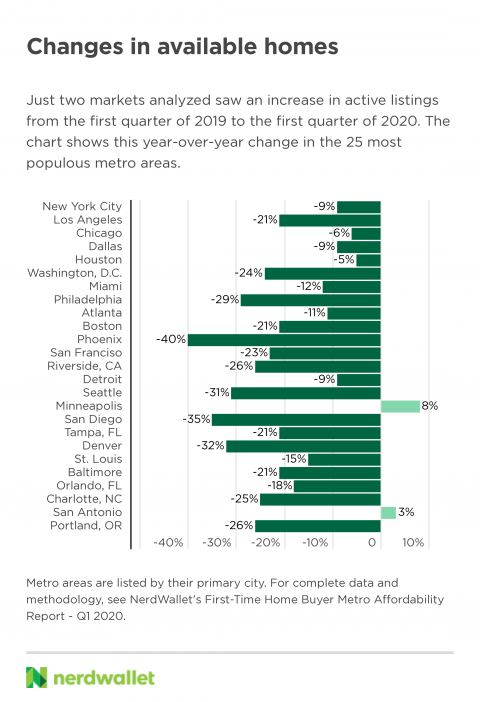
First-Time Home Buyers Face Record Affordability Crisis in Q1 2020 Metro Report
First-time home buyers faced significant challenges in major U.S. metropolitan areas during Q1 2020, with both affordability and availability presenting substantial hurdles.
In 40% of the largest U.S. metros, list prices exceeded five times the median first-time buyer income. Active listings plummeted 19% compared to Q1 2019, creating a highly competitive market for new buyers.
Key Findings:
- National affordability ratio: 4.5 (meaning homes were listed at 4.5 times the median first-time buyer income)
- Only Pittsburgh had homes priced at the recommended three times income ratio
- 28 metros exceeded the national average affordability ratio
- 10 metros had list prices over six times local first-time buyer income
Price Trends:
- National average list prices rose 4% (inflation-adjusted)
- 39 of 50 largest metros saw price increases
- Los Angeles experienced the highest increase (21%)
- Only Houston, Minneapolis, and Louisville saw price decreases (4%)

Price change chart with downward trend
Inventory Challenges:
- Active listings fell in 48 of 50 major metros
- 23 metros saw inventory drops exceeding 20%
- Only Minneapolis (+8%) and San Antonio (+3%) showed inventory increases
- Salt Lake City experienced a 40% decrease in listings

Graph showing declining real estate listings
Los Angeles Market Spotlight:
- List prices increased 21% to $953,000
- Homes cost approximately 12 times median first-time buyer income
- Active listings decreased 21%
First-time buyers should consider:
- Using home affordability calculators to determine realistic price ranges
- Being prepared for multiple offer situations in competitive markets
- Evaluating income stability before stretching budgets
- Remaining patient in areas with limited inventory
Note: This data predates significant COVID-19 economic impacts, serving as a baseline for future market analysis.
Related Articles
12 Critical Mistakes First-Time Home Buyers Make - Expert Guide to Avoid Them
